Tall people are at increased risk of injury. On this page, I explain why this is the case, focusing in on back pain and back problems in particular. I also discuss some exercises, activities, spine sparing strategies, and ergonomic adaptations that can help in the prevention and recovery from back pain and back problems.
Much of this section of Tall Life draws on the work of the world renowned spine researcher, Stuart McGill, whom I had the good fortune of meeting while I was struggling with back pain of my own. If you want to learn from the expert himself, I suggest starting with his latest book, Back Mechanic.1
Please note that the contents of this page and website in general is not intended as medical advice and is for information purposes only. For more than that, please refer to the medical professionals mentioned and literature cited. This is stated in more detail on the website disclaimer.
Contents
Use this table of contents to jump to the sections that interest you most. For instance, if you don’t care why tall people have a higher risk of back pain and back problems, then it would be best to skip the first section.
Why Tall People Have a Higher Risk of Back Pain
Spine Stabilizing Exercises
Posture Correcting Exercises
Activities
Spine Sparing Strategies
Ergonomics
References
Why Tall People Have a Higher Risk of Back Pain and Back Problems
Barbados Joe Walcott, the 5′1″ former world welterweight boxing champion, was well known for entering into matches against significantly larger opponents. His rather famous reasoning was that, “The bigger they are, the harder they fall,” and he figured a smaller fighter could take advantage of this. For anyone other than Barbados Joe Walcott, this would probably be a bad bet. But, he was right that a larger person experiences more force when they hit the ground.
But shouldn’t our taller bodies be better suited to larger forces? They are, but not proportionally so. This is because the taller body, despite being absolutely stronger, is relatively weaker, as per the Sqaure-Cube Law.
Another issue often pointed out is that our larger bodies have longer levers. To better appreciate this concept, let’s consider the wrench analogy. As we all know, it’s hard to get a nut off a bolt by hand. This is why we have wrenches. And for the tightest nuts, we have extra-long wrenches. This is because a longer wrench can apply more torque (rotational force) to the nut. But while large torque is great for unscrewing a nut, too much can break it. Similarly, taller people’s longer limbs apply more torque to the joints. And as with forces, our larger joints are better at accepting larger torques, but not proportionally so, as per the square-cube law. The result is an increased risk of injury.
Another issue tall people face is that a thicker body experiences more stress when bent or twisted a given angle. You can verify this yourself by bending two different size wooden dowels, noting that the thicker one breaks at a lesser angle.
And yet one more issue is our slower reflexes that result from longer nerves,2–14 as this makes it harder to avoid injurious situations. All of these issues, and perhaps more, increase our risk of injury.
But if size is such an issue, then how is it that larger species get by? Shouldn’t giraffes be constantly suffering from sore necks? The answer is that larger species have had millions of years to adapt for their great size, such as by becoming relatively more big boned. Their legs also tend to be stacked closer to vertical, including when running, and this decreases torques on their joints.5 More generally, they move conservatively and plan far ahead in order to compensate for their slower reflexes.6 Tall people have not benefited from this same extent of evolutionary adaptation for our size, and this, rather than our size alone, is the deeper reason why we’re more likely to become injured.
Many studies confirm that we’re at greater risk for injuries, including to the ankle, knee, hip, back, neck, shoulder, and wrist.7–20 Studies of injury rates in various sports also routinely find tall athletes are at greater risk.8,17–19 And the injuries that afflict the elderly are also more common in tall people, such as hip fractures.20
I’ve injured all but one of the joints I mentioned above. My worst injury by far was to my back. Back injuries can come on suddenly, or gradually as was the case for me. I figure poor posture has a lot to do with it, or more specifically, a deviation from neutral spine posture. This is more likely to occur for tall people both due to ill-fitting manufactured objects and lesser relative strength. But what is it that’s so disastrous about deviating from neutral spine posture in the first place?
A deviation from neutral spine posture corresponds with a bending of the spine. The main problem with a bent spine, Stuart McGill explains, is that uneven pressure is applied to the discs.21 This is particularly problematic for loads that are large (car accident), applied over longer durations (desk work), or applied cyclically (vibrating machinery or sports). Uneven pressure in these instances pushes the gel-like contents of the disc away from center, encouraging a departure from the disc. The simplest way to visualize this is as the squishing of a jelly donut. Sometimes the result is called a herniated disc. I have several discs in my own spine that have been damaged similarly.
Another way discs can become altered is by a loss of water content, which results in a decrease in thickness. This happens naturally over the course of the day as gravity compresses the discs. This is why we tend to be shorter in the evening than in the morning. I actually once bought a car in the evening only to find out the next morning that it was too small for me!
As we age, the discs can lose some of their ability to remain hydrated, and this results in a more permanent reduction in stature. Besides with age though, desiccation can also result from stress, which in theory tall people are more subject too. Once again, many of my discs have been damaged in this way.
As I know from experience, disc damage can cause immense pain. This may come directly from the damaged disc or from the pressure herniations put on sensitive nerves outside the disc. Pain in turn causes tightness, putting more stress on the discs. The resulting injury loop can lead to chronic pain.
Though there’s some evidence that discs can regenerate,22,23 this healing is nowhere near as speedy as for broken bones. One doctor actually told me mine would probably never heal. The fact I wish he’d have told me, though, is that herniated discs and the like are often asymptomatic,24 meaning there are lots of people walking around with them without even knowing it. It would follow then that herniations may become asymptomatic with time. Knowing this early on would have saved me a lot of grief.
To give the discs a chance to become asymptomatic, we must avoid injuring them further. So in this case, prevention and recovery are pretty much the same thing. The key for both is maintaining good posture. This can be aided with exercises, activities, spine sparing strategies, and ergonomic modifications, as explained in the following sections.
Spine Stabilizing Exercises
When my back first started getting bad, I jumped to the conclusion that this was a sign of weakness. So I hit the gym and started lifting some heavy weights. Similarly, I was told I had to improve my flexibility, so I began working my way up to being able to touch my toes with straight legs, and so on.
As it turns out, I was doing myself more harm than good; I later learned from Stuart McGill that neither high static back strength nor mobility are associated with lower risk of back injury, and can actually have the opposite effect. Instead, it’s good muscle endurance and control that’s important. For further appreciation of this notion, consider that low force tasks extended over long durations, such as standing, or tasks requiring proficient control, such as picking a pencil up off the ground, often lead to injury.
Muscle endurance and control are thus important for maintaining a stable spine, where a given posture, usually the neutral posture, is maintained. This ability can be improved with exercises that challenge endurance and control, such as Stuart McGill’s Big Three Stabilizing Exercises.21 I briefly explain these below. Before attempting these, it’s best to consult a physiotherapist or similar to ensure they will be helpful for your unique circumstances.
Cat-Camel: This first exercise isn’t for increasing stability but rather for increasing the viscosity in the spine, among other benefits, and thus useful for preparing for stabilizing exercises. McGill recommends moving between these two postures approximately five to eight times, integrating movement throughout the entire spine.
#1 Curl-up: With the hands supporting the neutral curvature of the low back and one knee flexed, the head and shoulders are slightly raised from the floor. A possible routine could include three sets with six, four, and then two reps that last ten seconds each, alternating which knee is flexed.
#2 Side Bridge: Support the body weight by the feet and forearm. The less advanced version is done with the knees on the ground. The same rep/set pattern as for the curl-up can be used.
#3 Bird Dog: One arm and one leg, on opposite sides of the body, are raised. The same rep/set pattern as the curl-up can be used.
Posture Correcting Exercises for Tall People Back Problems
A former coach of mine once mentioned to me that I looked strong from in front but weak from behind. What he was noticing was that my chest muscles were overpowering my upper back muscles, causing my shoulders to round forward.
Some years later, I learned that what I was experiencing was part of a fairly common pattern of muscle imbalances known as the crossed syndromes.25,26 They’re called crossed because tight and weak compensations literally cross the body, cascading along its length in an alternating pattern. In the spine, visually, the tight regions are curved inwards while the weak and elongated regions are curved outwards, both contributing to an accentuation of the spine’s natural curvatures.
There are two characteristics of the crossed syndromes that warrant pointing out in the context of tall stature. The first is that the resulting distorted posture relies more on passive support from musculoskeletal tissues, thereby decreasing muscular effort. The second is that they decrease overall stature. Taller peoples’ diminished relative strength and relatively short artificial environment may provide increased incentive for us to adopt the distorted posture, and thereby initiate the syndromes.
Besides the crossed syndromes, there are many other ways posture can become distorted. The good news though is that regularly performed exercises can provide some compensation for the issues leading to postural distortions. The basic idea is to stretch the tight muscles and strengthen the weakened muscles. A physiotherapist or similar can help determine if your posture is distorted and prescribe exercises to correct it. A useful resource here is the below book by the National Academy of Sport Medicine.
Activities for Tall People Back Pain Prevention and Recovery
When my back first got bad, I got a lot of suggestions for various activities I could do that might help. Perhaps the most common was to do yoga, for which the benefits for back pain sufferers are well known.27,28
Many yoga poses help build muscle endurance and control and correct common postural distortions. Particularly beneficial are the poses that emphasize neutral spine posture. And beyond the mechanical aspects, there are other reasons why yoga may be helpful for back pain sufferers, including the cultivation of mindfulness.29,30
I’d like to note, though, that Stuart McGill has expressed concern over the yoga poses that twist and bend the spine considerably, such as those below. He explains that this isn’t necessary for building a robust back, and can actually increase the risk of injury. Yet, as McGill demonstrated in a recent yoga workshop I attended, some of these poses can be done more moderately or modified for the individual, which happens to be a central theme in yoga.
I think yoga is particularly great for tall people given it presents an opportunity to improve relative strength, which we tend to lack. The flip side though is that we need to be careful with the poses that require high relative strength. Our other characteristics that warrant caution include lesser flexibility, more numerous injuries, and thicker spine that won’t twist nor bend as readily. Nevertheless, I’ve been practicing yoga with moderation myself for some seven years now and am certain that it has helped me enormously. See the Yoga for Tall People page for more.
The next most common recommendation I got was to take up swimming. This seemed like a great idea to me, particularly because tall people, like 6′4″ Michael Phelps, make great swimmers. As with yoga though, swimming is a varied activity, so different strokes for different folks. The Phelps style butterfly, for example, will probably not be helpful to those suffering from back injuries. Breast stroke and front crawl, on the other hand, may be better. But even these require some extent of twisting and extending of the spine as breaths are taken. The solution I came across is to use a swim snorkel. This negates coming up for air, thereby facilitating a neutral posture along the entire length of the spine. See Swimming Strokes for Bad Backs and Necks for more on this topic.
When swimming is vigorous, it yields cardiovascular benefits, which can be beneficial for back pain sufferers.31 This is likely because of a hypoalgesic effect32; endorphins are released which decrease pain much like morphine does. Extended exercise can also trigger the release of endocannabinoids which can give a euphoric feeling commonly known as runner’s high,33 helping the body to relax. I’ve found cycling to be an even better form of low impact cardiovascular exercise. McGill does point out though that competitive road cycling can encourage too much spine flexion.
Walking, though somewhat less than cycling and swimming, also has cardiovascular benefits. Interestingly, McGill has found a brisk pace—and for tall people this will be particularly fast—better for the back than a stroll. A decent arm swing and looking straight ahead also help. More walking can be interjected into daily life by parking at the far side of the lot, taking the stairs, and my personal favorite, getting a dog.
Food can also have an influence on injury recovery and prevention, including on the body’s inflammation response. Sufficient consumption of Omega-3s in particular has been recognized as important.34
A final concept I’d like to mention is moderation. A routine, whether for an athlete of any level or for an individual recovering from an injury, lies on an inverted U-shaped curve, where the optimum has neither too much rest nor too much training.21 By finding this golden mean, as Aristotle once called it, optimum physique can be achieved.
Spine Sparing Strategies to Prevent Tall People Back Problems
Young people, my former self included, tend not to be all that careful with their backs. For instance, I remember my total disregard for spine posture when lifting things, despite my wiser elders advising me to keep a straight back. I did eventually learn, but the hard way, and at great cost to my spine. Perhaps if I’d read it in a book such as this, it might have played out differently. Below are a variety of spine sparing strategies.
- Maintain a neutral spine posture: Neutral spine posture is particularly important when under load, especially prolonged static and cyclical loads.
- Use the lower extremities for getting low: The squat, hip hinge, lunge, and golfer’s lift are all robust postures for getting low.
- Minimize torque arms: By lifting close to the body and pushing and pulling through the center of the spine, torque acting on the spine is minimized. When pulling low door handles, for example, torque can be reduced via a slight lunge.
- Contract core muscles before lifting heavy loads: Though this increases the load on the spine, it ensures the neutral posture is maintained, which tends to be more critical.
- Use aids: Use lifting tools such as hoists, dollies, and furniture straps. Protective clothing can also help as it encourages holding the load closer to the body, thereby reducing torques. Knee pads are particularly helpful for us as they encourage getting low via kneeling rather than flexing the spine.
- Use mechanical advantage: When lifting a log, for example, use leverage by lifting one side at a time. Better yet, have a second person lift the other side as is common in such tasks as moving a couch.
- Avoid prolonged static postures: Even low stresses, when maintained for long periods such as for desk work, can lead to injury. So it’s best to regularly get up and move.
- Avoid bending and lifting early in the morning and after sitting: The discs are most hydrated after waking, and this leads to a stiff spine. Sitting tends to have the opposite effect, but only on one side of the spine. It’s best to delay bending and strenuous activity after both waking and sitting.
Ergonomics to Prevent Tall People Back Pain
Another factor that needs addressing is the poor ergonomics that result from ill-fitting objects (economy of scale is the culprit here). This is such an enormous problem for tall people that I have devoted an entire section of this website to it: Ergonomics. For me, addressing my ergonomics in the kitchen, in my car, and at my desk and office chair had the greatest benefit for my back pain and back problems.
Tall People Back Pain and Back Problems References
- Stuart. Back Mechanic: The Step-by-Step McGill Method to Fix Back Pain. Gravenhurst: Backfitpro; 2015.
- Rivner MH, Swift TR, Crout BO, Rhodes KP. Toward more rational nerve conduction interpretations: the effect of height. Muscle and Nerve. 1990;13.
- Soudmand R, Ward LC, Swift TR. Effect of height on nerve conduction velocity. Neurology. 1982;32.
- Soodan J., Kumar A. Relationship among Anthropometric Indices & Motor Nerve Conduction Velocity of Radial & Ulnar Nerves in Aerobic Trained Athletes. J Exerc Sci Physiother. 2012;8(1).
- Biewener A a. Biomechanical consequences of scaling. J Exp Biol. 2005;208(Pt 9).
- More HL, Hutchinson JR, Collins DF, Weber DJ, Aung SKH, Donelan JM. Scaling of sensorimotor control in terrestrial mammals. Proc Biol Sci. 2010;277(1700).
- Milgrom C, Shlamkovitch N, Finestone A, et al. Risk factors for lateral ankle sprain: a prospective study among military recruits. Foot Ankle. 1991;12(1).
- Han K-J, Kim Y-K, Lim S-K, Park J-Y, Oh K-S. The effect of physical characteristics and field position on the shoulder and elbow injuries of 490 baseball players: confirmation of diagnosis by magnetic resonance imaging. Clin J Sport Med. 2009;19(4).
- Zwerver J, Bredeweg SW, van den Akker-Scheek I. Prevalence of Jumper’s Knee Among Nonelite Athletes From Different Sports: A Cross-Sectional Survey. Am J Sports Med. 2011;39(9).
- Trimpou P, Landin-Wilhelmsen K, Odén a, Rosengren a, Wilhelmsen L. Male risk factors for hip fracture-a 30-year follow-up study in 7,495 men. Osteoporos Int. 2010;21(3).
- Sobti A, Cooper C, Inskip H, Searle S, Coggon D. Occupational physical activity and long-term risk of musculoskeletal symptoms: a national survey of post office pensioners. Am J Ind Med. 1997;32(1).
- Dehner C, Schick S, Arand M, Elbel M, Hell W, Kramer M. Influence of anthropometry on the kinematics of the cervical spine and the risk of injury in sled tests in female volunteers. Accid Anal Prev. 2008.
- Roquelaure Y, Bodin J, Ha C, et al. Incidence and risk factors for thoracic spine pain in the working population: the French Pays de la Loire study. Arthritis Care Res (Hoboken). 2014;66(11).
- Wahlström J, Burström L, Nilsson T, Järvholm B. Risk Factors for Hospitalization Due to Lumbar Disc Disease. Spine (Phila Pa 1976). 2012;37(15).
- Milanese S, Grimmer K. School furniture and the user population: an anthropometric perspective. Ergonomics. 2004;47(4).
- Kuh DJ, Coggan D, Mann S, Cooper C, Yusuf E. Height, occupation and back pain in a national prospective study. Br J Rheumatol. 1993;32.
- McKay GD, Goldie P a, Payne WR, Oakes BW. Ankle injuries in basketball: injury rate and risk factors. Br J Sports Med. 2001;35(2).
- Venturelli M, Schena F, Zanolla L, Bishop D. Injury risk factors in young soccer players detected by a multivariate survival model. J Sci Med Sport. 2011;14(4).
- Wright KJ, Crée C De. The Influence of Somatotype, Strength and Flexibility on Injury Occurrence among Female Competitive Olympic Style Gymnasts. A Pilot Study. Jounral Phys Ther Sci. 1998.
- Jokinen H, Pulkkinen P, Korpelainen J, et al. Risk factors for cervical and trochanteric hip fractures in elderly women: a population-based 10-year follow-up study. Calcif Tissue Int. 2010;87(1).
- McGill SM. Low Back Disorders: Evidence-Based Prevention and Rehabilitation. Third Edit. Champaign Illinois: Human Kinetics Publishers; 2002.
- Scannell JP, McGill SM. Disc prolapse: evidence of reversal with repeated extension. Spine (Phila Pa 1976). 2009;34(4).
- Kroeber M, Unglaub F, Guehring T, et al. Effects of controlled dynamic disc distraction on degenerated intervertebral discs: an in vivo study on the rabbit lumbar spine model. Spine (Phila Pa 1976). 2005;30(2).
- Adams MA. THE BIOMECHANICS OF BACK PAIN. Acupunct Med J Br Med Acupunct Soc. 2003;22(1).
- Janda V. Die muskularen hauptsyndrome bei vertebragen en beschwerden, theroetische fortschritte und pracktishe erfahrungen der manuellen medizin. Int Congr FIMM. 1979.
- Lucett SC. NASM Essentials of Corrective Exercise Training.; 2013.
- Holtzman S, Beggs RT. Yoga for chronic low back pain: a meta-analysis of randomized controlled trials. Pain Res Manag. 2013;18(5).
- Cramer H, Lauche R, Haller H, Dobos G. A systematic review and meta-analysis of yoga for low back pain. Clin J Pain. 2013;29(5).
- Banth S, Ardebil MD. Effectiveness of mindfulness meditation on pain and quality of life of patients with chronic low back pain. Int J Yoga. 2015;8(2).
- DC C, KJ S, BH B, et al. Effect of mindfulness-based stress reduction vs cognitive behavioral therapy or usual care on back pain and functional limitations in adults with chronic low back pain: A randomized clinical trial. JAMA. 2016;315(12).
- Rainville J, Hartigan C, Martinez E, Limke J, Jouve C, Finno M. Exercise as a treatment for chronic low back pain. Spine J. 2004;4(1).
- Naugle KM, Fillingim RB, Riley JL. A meta-analytic review of the hypoalgesic effects of exercise. J Pain. 2012;13(12).
- Fussa J, Steinlea J, Bindilac L, et al. A runner’s high depends on cannabinoid receptors in mice. In: Proceedings of the National Academy of Sciences. ; 2015.
- Rayman MP, Pattison DJ. Dietary manipulation in musculoskeletal conditions. Best Pract Res Clin Rheumatol. 2008;22(3).


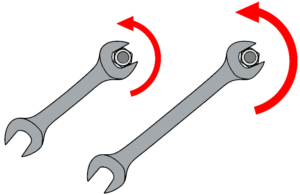






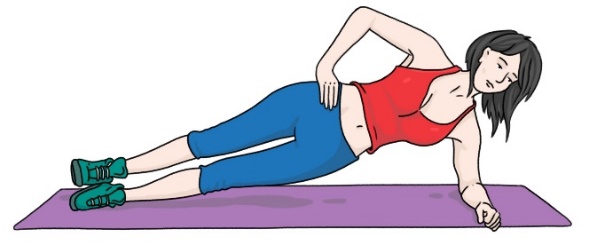
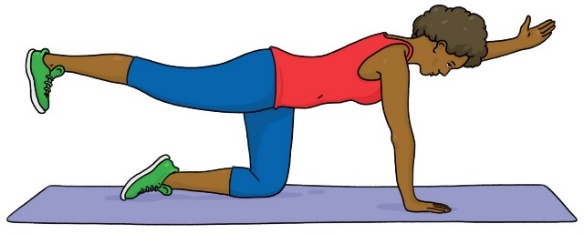









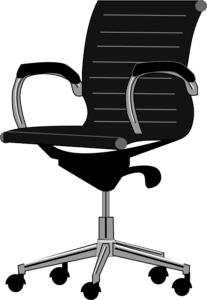
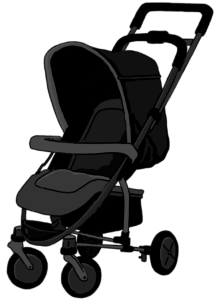




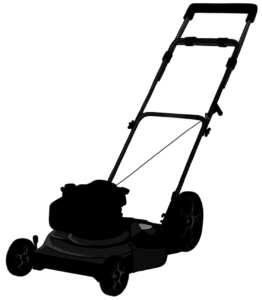
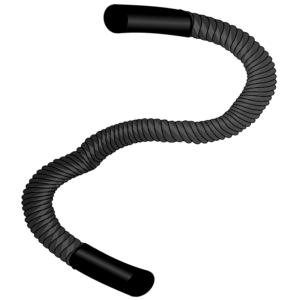

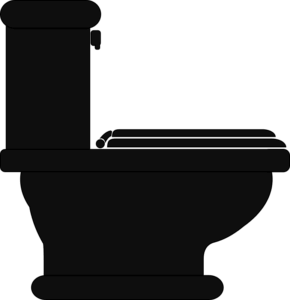
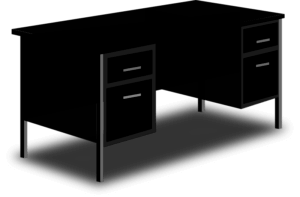
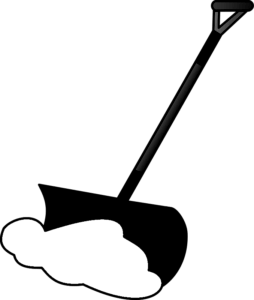

Thanks so much for the practical and very helpful information! I’ll do my best to follow all of your excellent advice. Thanks again and best wishes to all tall people who suffer back pain!
Glad you found it helpful, Charlie!
LOVE McGill’s Book for Lower Back Issues — I recently purchased McGill’s book (about 6 months before finding your website). It has totally changed my life! I herniated some disks in my lower back around age 12; I’m now 41. In my late 30’s I started thinking that I would be stuck with chronic arthritis pain in my lower back for the rest of my life. I got this book, and within the first few weeks, all that chronic aching pain went away. All I had to do was change my everyday posture and movement habits. Sometimes I slip into bad habits again, but then I just pick up the book and re-read my highlighted portions and the pictures. It’s great that you are telling people about this book! McGill is brilliant.
Car Chair — My next step is too take a closer look at your information about that tall person bucket seat for my car. I was headed to that info this morning, but got distracted by your other articles like this one 🙂
Bicep Tendentious — Perhaps somewhat related to cross syndrome, I’m experiencing what I think some call swimmer shoulder (although I’m not a swimmer). I have bicep tendentious, and in response the physical therapist gave me exercises to strength the backs of my shoulders (e.g. rotatory cuff muscles, etc.). My current theory is two fold. First, most exercises and activities (for us non-professional exercisers) focus on using and developing the front muscles (e.g. push ups, bicep curls, heavy bag work, etc.), but neglect some of the upper back muscles. Sure we work triceps to balance biceps, but triceps don’t give counter force to pecs. Second, taller people use those back-of-shoulder muscles even less than average height people because those muscles tend to disengage (unless we are deliberately engaging them) when we are looking at and working at things things that are too far down, like the computer keyboard or kitchen counter. That’s my current theory. Thanks for mentioning cross syndrome and the NASM Corrective Exercise Training book. I’ll look into those as well.
Thanks — For years I’ve been saying that tall people seem more likely to get injured, but it was just a hypothesis until I found your website. Thank you for all the work you have put into the Tall Life website. It’s a fabulous resource on all kinds of tall people topics!
I really appreciate the feedback, Kat! It was back pain that motivated me to start this website in the first place. So I feel this really is the most important page on the site. I sure hope it is helping other tall people. Comments like yours keep me pushing on.
I like your hypothesis. I bet a biomechanics researcher could find some truly fascinating differences for taller bodies if only they were to study them.
If you ever get that tall car seat in your car, please write in about it!
Thanks again, and best of luck!
Sam
Thanks for great summary. Do you know if I should actually bulk up and build more muscle mass, especially in my back, to reduce the risk of back problems? At the moment I am 6 foot 3 and weigh only 75 kg. Do you know where I could find out about this?
My understanding of McGill’s conclusions is that it is not peak strength (and thereby ‘bulk’) that is most preventative of back pain (and sometimes the reverse). Rather, it is motor control and muscle endurance that are important, which I don’t think correlate well with ‘bulk’. I highly recommend reading McGill’s book, Back Mechanic. I believe it is a must-read for back pain sufferers.
Thanks so much! I understand that Back Mechanic not only has tips on reducing pain, but also on preventing all sorts of back related problems in the future.
Your welcome.
I think that book is a must read for all extremely tall people.
Very informative read. I always thought i just complained to much but now i see what’s really going on with my spine.
I’m glad you found it enlightening!